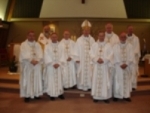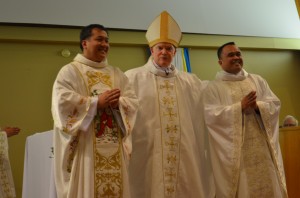History
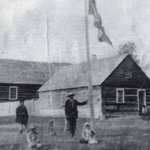 A record of our history begins in 1842 when a priest by the name of Father Demers traveled from Vancouver to Fort St. James, which was the capital of what is now British Columbia. His mission was to the few Catholics who had moved into this area, and to bring the good news of Jesus Christ to the First Nations people. He stopped briefly at Fort George where he preached the gospel and baptized five people.
A record of our history begins in 1842 when a priest by the name of Father Demers traveled from Vancouver to Fort St. James, which was the capital of what is now British Columbia. His mission was to the few Catholics who had moved into this area, and to bring the good news of Jesus Christ to the First Nations people. He stopped briefly at Fort George where he preached the gospel and baptized five people.
Father Demers’ mission in this region begins the history of what eventually became the Diocese of Prince George. The central interior of the province was under the Vicariate Apostolic of Oregon Territory by 1843 and subsequently the Archdiocese of Oregon City before the Diocese of Vancouver Island was created.
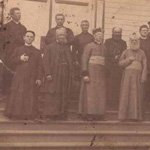 The Missionary Oblates of Mary Immaculate, a religious order of priests and brothers that originated in France, were given responsibility for the mission of the church on the mainland of British Columbia in 1861. There were relatively few communities spread over the vast territory that is the northern half of the province. Priests ministered in isolated conditions, often enduring incredible hardships to serve the people entrusted to their care.
The Missionary Oblates of Mary Immaculate, a religious order of priests and brothers that originated in France, were given responsibility for the mission of the church on the mainland of British Columbia in 1861. There were relatively few communities spread over the vast territory that is the northern half of the province. Priests ministered in isolated conditions, often enduring incredible hardships to serve the people entrusted to their care.
Father Adrien-Gabriel Morice, OMI, arrived in northern British Columbia in 1885 and served the Carrier and Sekani peoples out of the mission of Stuart Lake. He is well known for his invention of the Carrier syllabics, the written grammar of the language and the translation of the Carrier prayer book, which is still used today by First Nations elders. Father Morice established a printing press at Stuart Lake and is also known for the maps he made of the interior of BC. In fact, it was one of his maps that became the first map of the interior of BC published by the government in 1907.
Another pioneer Oblate was Father Nicolas Coccola, OMI, who came to Fort St. James in 1905 and served the First Nations people of this region until his death in Smithers in 1943. He traveled constantly to be with the people, in all seasons and conditions, suffering with and for the people in the sense of a “true missionary”.
Bishop Emile Marie Bunoz, O.M.I.
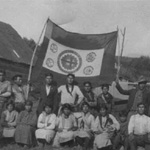
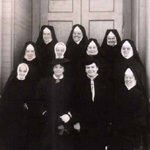



A young Father Emile Bunoz arrived in British Columbia in 1891. In 1898 he was named Vicar General of the Diocese but in 1902 he left the lower mainland for Dawson City in the Yukon. By this time it was becoming clear that the administration was too far away from the northern missions.
On March 8, 1908 Northern BC and the Yukon were separated from the rest of BC to become the Prefecture Apostolic of the Yukon and Prince Rupert. Pope Pius X charged Father Bunoz with its pastoral care and,making his home in Prince Rupert,
By 1944 the territory was too large and unwieldy to be governed by one administrative centre in Prince Rupert. On January 14, 1944 the Holy Father, Pope Pius XII divided the territory into two vicariates. Bishop John Coudert, O.M.I., formerly co-adjutor bishop of the old Vicariate, was transferred to Whitehorse and given responsibility for the Yukon and the most northern part of BC while Bishop Bunoz continued as Vicar Apostolic of Prince Rupert.
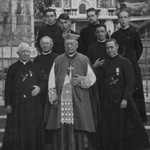 Throughout its history, the Oblates provided most of the priests for this territory. It is only in more recent years that there have been greater numbers of diocesan priests. In the 1940s there were only three diocesan priests, and none of them came from local parishes.
Throughout its history, the Oblates provided most of the priests for this territory. It is only in more recent years that there have been greater numbers of diocesan priests. In the 1940s there were only three diocesan priests, and none of them came from local parishes.
Bishop Bunoz recruited four Religious Orders of Women to establish schools and hospitals. The Sisters of the Child Jesus came to Lejac to staff the Indian Residential School located there. The Sisters of St. Joseph of Toronto provided teachers and staff at Annunciation School in Prince Rupert from its very beginning in 1917. The Sisters of St. Anne and the Sisters of Charity of Providence established and staffed hospitals in Smithers, Vanderhoof, Dawson Creek and Fort St. John. In 1949 the Sisters of St. Anne also opened a school at Sacred Heart Parish in Prince George.
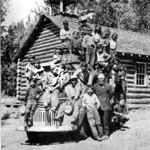 The Peace Region of BC was part of the Archdiocese of Grouard-MacLennan until 1944. One of the pioneer priests who
The Peace Region of BC was part of the Archdiocese of Grouard-MacLennan until 1944. One of the pioneer priests who
ministered there was Father Emile Jungbluth, O.M.I., who came to Canada from Alsace-Lorraine in 1936. His first parish
in BC was in Fort St. John and from there he traveled to outlying communities first on horseback and then by motorcycle and truck.
He opened a missions at Kelly Lake and Moberly Lake and forded the Peace River, either by rustic ferry or by swimming and holding on to his horse’s tail. In 1939 a beautiful little log church was built on the shore of Moberly Lake, which Father Jungbluth named St. Theresa’s after the patroness of Missions.
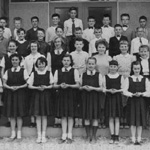 During the 1940s a great opening up of the territory took place as the 1523-mile Alaska Highway was built, beginning in Dawson Creek and ending in Fairbanks, Alaska. Along with his ministry in local parishes and missions, Father Jungbluth
During the 1940s a great opening up of the territory took place as the 1523-mile Alaska Highway was built, beginning in Dawson Creek and ending in Fairbanks, Alaska. Along with his ministry in local parishes and missions, Father Jungbluth
was appointed military chaplain to serve the US forces along the highway’s construction.
In 1944 the Peace Region of BC became part of the newly formed Vicariate of Prince Rupert in order for diocesan and provincial boundaries to coincide. It was not until 1958 that the Pacific Great Eastern Railway, along with the John Hart Highway, crossed the Rocky Mountains at Pine Pass to connect the region with the rest of BC.
Bishop Anthony Jordan, O.M.I.
 On June 3, 1945 Bishop Emile Marie Bunoz passed away in Prince Rupert. Later that same month Bishop Anthony Jordan, O.M.I., was appointed Vicar Apostolic. Over the next 10 years many new churches and two new schools were built. Both Bishop Bunoz and Bishop Jordan worked diligently to encourage local young men to enter the priesthood. But it was not until 1952 that the first local diocesan priest, Lawrence Turgeon, was ordained.
On June 3, 1945 Bishop Emile Marie Bunoz passed away in Prince Rupert. Later that same month Bishop Anthony Jordan, O.M.I., was appointed Vicar Apostolic. Over the next 10 years many new churches and two new schools were built. Both Bishop Bunoz and Bishop Jordan worked diligently to encourage local young men to enter the priesthood. But it was not until 1952 that the first local diocesan priest, Lawrence Turgeon, was ordained.
These years were a time of growth in northern BC. Forestry and mining brought workers and their families into this missionary territory. Towns like Terrace, Smithers, Prince George and Fort St. John grew rapidly.
Bishop John Fergus O’Grady, O.M.I.
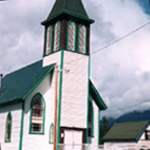



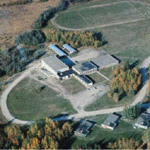
Most Reverend John Fergus O’Grady, O.M.I., was ordained Bishop and appointed Vicar Apostolic of Prince Rupert by Pope Pius XII on March 7, 1956.
With only four Catholic schools in the nearly 347,000 square kilometers of northern BC, it was clear to Bishop O’Grady from the start that Catholic education was a primary need. He began a recruitment drive and hundreds of young people from around the world, inspired by his vision and enthusiasm, began arriving to help. In four years the number of schools increased to thirteen.
The builders were followed by teachers, bus drivers, nurses, maintenance workers, janitors and office staff. Over the next 35 years approximately 4,000 people from five continents became part of this movement known as the Frontier Apostolate. http://www.cmic.info/The-time-of-our-lives
In 1958 the Sisters of Mercy came from Callan, Ireland to staff one of the newly established schools, St. Maria Goretti School in Fort St. James. And in 1960 Prince George College, later known as O’Grady Catholic High School, was built in Prince George.
The city of Prince George had grown into a major centre for northern BC. From Prince George it was easier to reach the parishes in the Peace Region of the North as well as those in communities along Highway 16 to Prince Rupert. Though it was still considered missionary territory and under the Society for the Propagation of the Faith, Pope Paul VI raised the territory to a Diocese in 1967. On June 5, 1968 Bishop O’Grady moved his chair from Annunciation Parish in Prince Rupert to Sacred Heart Cathedral in Prince George. The Apostolic Delegate to Canada, Most Reverend Emanuele Clarizio, installed Bishop O’Grady as the first Bishop of the Diocese of Prince George on that same date.
A number of men from local parishes were ordained to the ministerial priesthood, both diocesan and Oblate, during this time. They entered the seminary from Terrace, Dawson Creek, Fort St. John, Kitimat, Prince George and Smithers.
In accordance with Canon Law Bishop O’Grady submitted his resignation to Pope John Paul II when he reached the mandatory age of retirement in 1983. At 75 years of age he had given 27 years of faithful service to the Diocese of Prince George. Throughout his retirement Bishop O’Grady remained in Prince George, serving the faith community as a respected elder. As much as he was able he celebrated daily Mass in the Domano Chapel, provided replacement ministry in parishes and was an integral part of diocesan celebrations.
Declining health limited his ministry in the last couple of years before his death on March 3, 1998 at 89 years of age. Nearly 2,000 people gathered at the Prince George Civic Centre on March 9, 1998 to celebrate his funeral Mass, and St. Augustine’s Church in Vancouver was filled to capacity on March 11, 1998 before Bishop O’Grady was laid to rest at the Oblate cemetery in Mission, BC.
Bishop Hubert Patrick O’Connor, O.M.I.

 Although Bishop O’Grady submitted his resignation in 1983, it was not until June 1986 that Bishop Hubert Patrick O’Connor, O.M.I. was appointed Bishop of the Diocese of Prince George. Bishop O’Connor had been Bishop of the Diocese of Whitehorse from 1971. He was installed as Bishop of the Diocese of Prince George at Sacred Heart Cathedral on August 15, 1986.
Although Bishop O’Grady submitted his resignation in 1983, it was not until June 1986 that Bishop Hubert Patrick O’Connor, O.M.I. was appointed Bishop of the Diocese of Prince George. Bishop O’Connor had been Bishop of the Diocese of Whitehorse from 1971. He was installed as Bishop of the Diocese of Prince George at Sacred Heart Cathedral on August 15, 1986.
Over the years what was once frontier territory had become an established region of BC with all the amenities of other areas of Canada. During this time a concerted effort was made by the Federation of Independent Schools Association (FISA) to get government funding for independent schools in BC. Mike VanAdrechem from Prince George played a crucial role in the negotiations.
When partial funding was established the need for volunteer teachers and staff in Catholic schools diminished. Immigration Canada changed its rules around recruiting from other countries for positions that were now able to provide employment for Canadians. Though the Frontier Apostolate came to a natural conclusion, hundreds of families across Western Canada can trace their citizenship back to a family member who generously responded to Bishop O’Grady’s call to serve the church in the Diocese of Prince George.
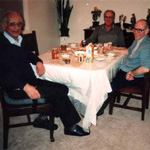 Msgr. Lawrence Turgeon
Msgr. Lawrence Turgeon
The late 1980s and early 1990s were a time of crisis in the Diocese of Prince George. A large debt had accumulated over the years. Providentially the city of Prince George began to boom in the 1990s and land owned by the diocese was sold to provide needed funds to run the diocese and to begin to pay down the debt. At the same time it became necessary for Bishop O’Connor to leave. He submitted his official resignation and the priests in the diocese elected Monsignor Lawrence Turgeon, then Vicar General and Director of the Diocesan Religious Education Communication Centre, as Diocesan Administrator in 1991. He served in this capacity until Pope John Paul II appointed a bishop in November 1992.
Bishop Gerald Wiesner, O.M.I.
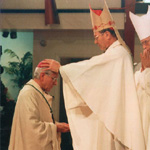
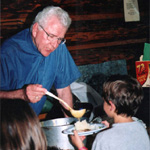 Most Reverend Gerald William Wiesner, O.M.I. was ordained the third Bishop of the Diocese of Prince George on February 22, 1993 at Sacred Heart Cathedral. He brought with him a solid background in theology having taught for many years at Newman Theological College, and a deep concern for the health and wellbeing of parishes and schools.
Most Reverend Gerald William Wiesner, O.M.I. was ordained the third Bishop of the Diocese of Prince George on February 22, 1993 at Sacred Heart Cathedral. He brought with him a solid background in theology having taught for many years at Newman Theological College, and a deep concern for the health and wellbeing of parishes and schools.
Bishop Wiesner was raised on a farm and learned early on the value of hard work and disciplined spending. Soon after arriving he established a Council of Priests and a Diocesan Finance Council. These two bodies provided – and continue to provide – valuable advice. The debt was paid off in 1996 and further land sales allowed the diocese to explore and implement policies to provide for the possibility of better financial security for the future.

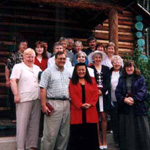
It was Bishop Wiesner’s strong conviction that adult faith education is the primary need of the Church. He was a much sought after workshop facilitator and retreat director throughout Canada and he brought these gifts and his convictions into the administration of the Diocese of Prince George. Under his administration parishioners were given numerous opportunities to grow in their knowledge of theology, liturgy, prayer and practice of the faith.
A Lay Formation Program was established in 1994 and people from throughout the diocese took advantage of this two-year learning experience offered in the Central, North and West regions. The Domano Renewal Centre opened its doors in 1994 when two members of the Society of the Sacred Heart, Sisters Marg Miller and Donna Dolan, arrived to give direction to this ministry. The Religious Education Trust was established to provide financial assistance to people wanted to pursue further faith studies.
In accordance with canon law, Bishop Wiesner submitted his resignation to coincide with his 75th Birthday in June 2012. The Diocese held a celebration honoring his 20 years as Bishop of Prince George two days before his birthday and, after a new bishop was appointed to the Diocese in January 2013, Bishop Wiesner retired to his home province of Saskatchewan.
Bishop Stephen Jensen
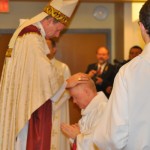 On January 3, 2013, His Holiness Pope Benedict XVI appointed Msgr. Stephen Jensen, Vicar General of the Archdiocese of Vancouver, as Bishop of the Diocese of Prince George. He was ordained to the episcopate at Sacred heart Cathedral in Prince George on April 2, 2013.
On January 3, 2013, His Holiness Pope Benedict XVI appointed Msgr. Stephen Jensen, Vicar General of the Archdiocese of Vancouver, as Bishop of the Diocese of Prince George. He was ordained to the episcopate at Sacred heart Cathedral in Prince George on April 2, 2013.
Bishop Jensen was born in North Vancouver and, after receiving a Masters of Divinity from St. Peter’s Seminary (University of Western Ontario), he was ordained to the ministerial priesthood on May 24, 1980. He served as pastor in three parishes as well as a member of the Catholic School Board and, later, Vicar for Education, before returning to his studies and receiving a Doctorate in Educational Leadership from the University of San Francisco in 2001.
Bishop Jensen took for his motto, Parare Vias Eius – To Prepare His Ways. During the first few months of his episcopacy he has stressed the importance of evangelization, an appropriate emphasis in the international Year of Faith.
Catholic Independent Schools
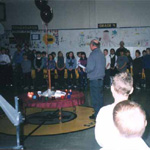 Over the years the organization of Catholic Schools in the diocese gradually became more formalized. Catholic Independent Schools (formerly Catholic Public Schools) is under a Board of Directors and its staff carries out the mandate of the Board. This structure evolved as the administrative needs of Catholic Schools in the province developed. In 1988 Mr. Gordon Domm was hired as Director of Education and served in this capacity until he returned to his home in Saskatchewan in 1993. Sr. Sally McLean came on staff in 1991 to ensure standards of instruction and as a resource for teachers and schools. She took on the role of Acting Director after Mr. Domm’s resignation until a new person could be hired the following year.
Over the years the organization of Catholic Schools in the diocese gradually became more formalized. Catholic Independent Schools (formerly Catholic Public Schools) is under a Board of Directors and its staff carries out the mandate of the Board. This structure evolved as the administrative needs of Catholic Schools in the province developed. In 1988 Mr. Gordon Domm was hired as Director of Education and served in this capacity until he returned to his home in Saskatchewan in 1993. Sr. Sally McLean came on staff in 1991 to ensure standards of instruction and as a resource for teachers and schools. She took on the role of Acting Director after Mr. Domm’s resignation until a new person could be hired the following year.
In 1994 Mr. Ted West was hired and soon after the title of his position was changed to Superintendent of Schools. Sr. McLean returned to her former position under the title of Director of Instruction. Mr. West reached the mandatory age of  retirement in October 2002. Mr. Phil Redmond took over as Superintendent and served until his health forced him to retire in 2004. Mr. Raymond Noonan moved from Newfoundland to take on the position in October 2004. Mr. Noonan retired in 2009 and in September of that year, Ms. Lynn McCracken, began her tenure. Mr. Chris Dugdale, the current superintendent, started in mid-2012.
retirement in October 2002. Mr. Phil Redmond took over as Superintendent and served until his health forced him to retire in 2004. Mr. Raymond Noonan moved from Newfoundland to take on the position in October 2004. Mr. Noonan retired in 2009 and in September of that year, Ms. Lynn McCracken, began her tenure. Mr. Chris Dugdale, the current superintendent, started in mid-2012.
The number of Catholic schools in the diocese has fluctuated over the years. Although at one time in the 1960s there were as many as fourteen schools, it was clear by the 1980s that some communities such as Mackenzie, Burns Lake, Fort St. James and New Hazelton had insufficient population to sustain a Catholic school. Low registration also forced the closure of O’Grady Catholic High School in Prince George in 2001 and St. Joseph’s in Vanderhoof in 2008. Today approximately 1,600 students attend eight Catholic elementary schools in the diocese: Sacred Heart, St. Mary’s and Immaculate Conception in Prince George; Notre Dame in Dawson Creek, St. Joseph’s in Smithers, St. Anthony’s in Kitimat, Veritas in Terrace and Annunciation in Prince Rupert. Enrolment has seen a modest increase in the last few years and the addition of Grades 7 at St. Anthony’s in Kitimat and Grades 8 and 9 in Veritas School in Terrace.
Priests, Sisters, and Lay Pastoral Ministers
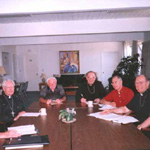
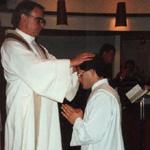
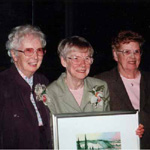
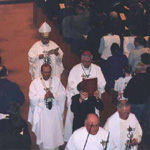
Vocation awareness is an important thrust in the diocese. People respond to their baptismal call in service of Christ in the community and a number of men have discerned a vocation to the ministerial priesthood.
On May 21, 1992 Archbishop Henri Legare, O.M.I., Metropolitan for the Diocese of Prince George and Archbishop of Grouard-McLennan, ordained Claude Daigle at Sacred Heart Cathedral. He returned on November 6, 1992 to also ordain Pier Pandolfo to the ministerial priesthood.
After 45 years of priesthood, the first diocesan priest, Monsignor Lawrence Turgeon, died on July 11, 1997 in Prince George. The month before, on June 6, 1997, Bishop Gerald Wiesner, O.M.I. ordained Father Chris Lynch at Sacred Heart Cathedral. Over the next six years three men were also ordained as diocesan priests, Fathers Robert Murrin in January 1999, Tom Shymko in June 2000 and John Garden in June 2004.
Two seminarians moved to the Diocese of Prince George from the Philippines in 2005. Venerando Sabacan and Rectorino Tolentino Jr. served their pastoral year in parishes in this diocese before completing their final year of study. On May 18, 2007, they were ordained to the ministerial priesthood by Bishop Wiesner at Sacred Heart Cathedral in Prince George. The Diocese welcomed two additional seminarians from the Phillippines: Alvin Matias in 2007 and Rene Antonio in 2009. On May 31, 2013, they were ordained to the ministerial priesthood by the recently ordained Bishop of Prince George, Most Rev. Stephen Jensen.
Currently there are 13 priests incardinated in the Diocese of Prince George with eleven actively involved in parish ministry, one retired to another diocese and one on study leave. Five Oblate priests serve in the diocese along with two priests on loan from dioceses in the United States and the Philippines. Two men are studying for ordination as a Roman Catholic priest. Thirteen men and women from six Religious Orders also minister in the diocese. A hermit has made vows to the Bishop.
Lay people provide leadership and pastoral care in a number of capacities throughout the diocese including Catholic schools, adult education and retreat ministry, family counseling, prison chaplaincy, youth ministry and university chaplaincy, parish administration, pastoral assistance and ministry in First Nations communities.
A treasured past: A new beginning
In 2001 the Diocese of Prince George celebrated a new phase in its history. No longer a missionary diocese, the official decree changing the canonical status bringing the diocese under the Common Law of the Church was dated March 25, 2000. Then Apostolic Nuncio of Canada, Archbishop Paolo Romeo, along with Archbishop Adam Exner, then Archbishop of Vancouver, the new Metropolitan for the Diocese of Prince George, joined with Bishop Wiesner and the people of the diocese to celebrate the occasion at the Chrism Mass on April 2, 2001.
On March 10, 2008 the Diocese of Prince George celebrated its 100th anniversary at the annual Chrism Mass held at Sacred Heart Cathedral. His Excellency, Archbishop Luigi Ventura, Apostolic Nuncio to Canada, was among eight visiting bishops who joined Bishop Gerald Wiesner, O.M.I., and the people and pastors of the Diocese of Prince George for the occasion. In his homily at the celebration Archbishop Ventura noted the history of the diocese and invited the community gathered to “keep in remembrance the faith and hope of the people of the diocese who offered their lives for Christ” in establishing the church.


